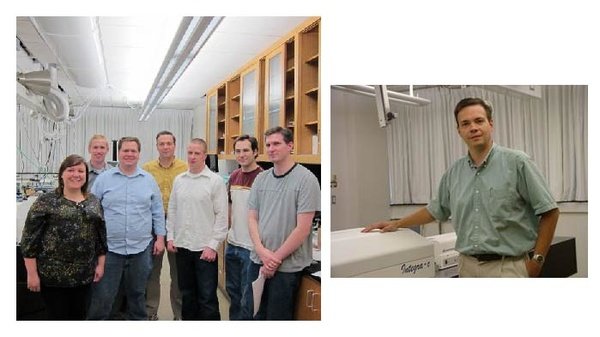Physical Chemistry Professor Speaks at Conference in California
March 24, 2011

Dr. James Patterson was one of nine professors nationwide invited to speak at the 58th Annual Western Spectroscopy Association Conference last month. This is the first time in more than 10 years a BYU professor was invited to speak at the conference.
“It’s always good to be invited to speak,” Dr. Patterson said. “This is a smaller conference but it’s still an honor to be invited.” The conference took place Jan. 19-21 at the Asilomar Conference Center in Pacific Grove, Calif. Dr. Patterson gave his talk, “Sum Frequency Generation: Coming of Age?”, on the morning of the last day. “I wanted to talk about our [group’s] research, but I wanted to tell the broader story,” he said. “That’s why the title of my talk was ‘Coming of Age.’”Dr. Patterson said he and his research group had discovered some assumptions about the sum frequency generation technique weren’t entirely accurate and were continually finding better ways to do things and he wanted to highlight that process in his talk. “All techniques go through this,” Dr. Patterson said. “You do the best you can, but you find some things you can do better or have been doing wrong. [These] ideas are broadly applicable.” After his talk, a student from the University of California, Irvine approached Dr. Patterson and asked him to speak to their spectroscopy club.
Dr. Patterson will make good on his promise while attending the ACS National Meeting in Anaheim. At the conference, Dr. Patterson also participated in a poster session on Wednesday, Jan. 19 with two students in his research group, Angela Calchera and Alexander Curtis. The students were able to go more into depth in the poster session about the group’s sum-frequency generation research. Although he wasn’t at the conference, fellow BYU professor Dr. Scott Burt also assisted in the research.“Vibrationally resonant sum-frequency generation (VR-SFG) is a nonlinear optical technique that provides inherent selectivity for surfaces and interfaces,” the abstract for Dr. Patterson’s talk reads. “VR-SFG has been used to determine the surface structure of polymers, surfactants, and multiple other systems. It can also provide insight into molecular dynamics at surfaces and interfaces. However, as has been the case with many techniques, it appears that our interpretation of SFG spectra may have been oversimplified.”
Dr. Patterson’s research group is currently working on two major projects: better understanding the molecular basis of adhesion and studying model HPLC (high performance liquid chromatography) stationary phases under high pressure. “Our findings will pave the way for the development of new adhesives designed from molecular considerations [and] … lead to improved predictions of optimal separation programs which will in turn improve the efficiency of HPLC analysis,” Dr. Patterson’s faculty page reads. Dr. Patterson graduated from BYU in 1998 with a master’s degree and went on to earn a PhD at the University of Illinois at Urbana-Champaign in 2004 before conducting postdoctoral research at the Institute for Shock Physics at Washington State University from 2004-2007.
By Jessica Henrie